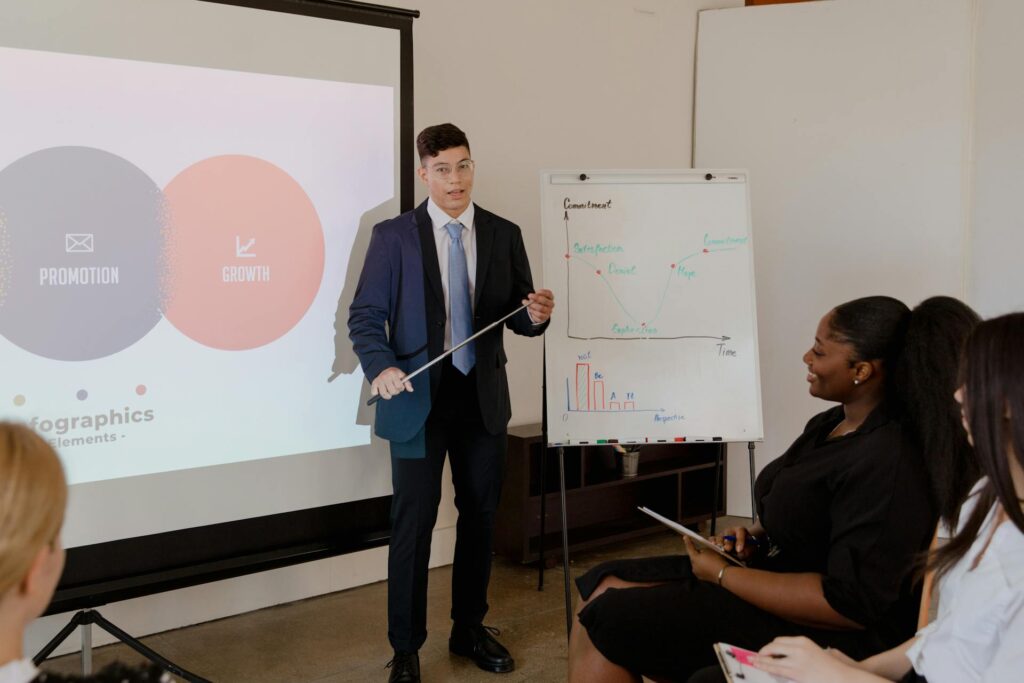Creating a great relationship between channel partners and sellers is like building a bridge.
The better the relationship, the stronger the bridge — and the more likely it is to weather adverse conditions.
Building a great bridge between sellers and partners requires effort and trust. More than that, it requires an enablement strategy designed just for channel partners, not one co-opted from internal enablement resources or strategies.
While partner sellers share common objectives with internal sellers, they are also members of an entirely different organization, complete with its own stakeholders, policies, and context to consider.
That’s the crux of the issue: Too few organizations treat channel partners like unique entities in need of tailored enablement.
A customized approach is the missing piece in nearly every channel enablement strategy. It’s the key to designing and executing meaningful programs that result in enduring channel partnerships.
Stronger Channel Partnerships Begin With Enablement
Enablement is the ultimate foundation of a successful channel partnership.
When tailored to partners’ unique needs, it empowers them to drive revenue, but it also creates the confidence and trust that lead to lasting customer relationships.
It should be a reciprocal relationship: Partners and enablement teams alike should be able to communicate their needs back and forth. Only then will enablement be truly tailored to the unique state of their business.
“Understand the value of joint collaboration,” said Joseph Tonye, director of sales enablement at Ivalua. “Enablement isn’t just about content; it’s not just about training or coaching. You need to understand what the outcome of the enablement process is and what motivates the partner organizations.”
Invest in a tailored, partner-oriented strategy.
When enablement makes channel partners feel supported, engaged, and motivated, the result is a fundamentally aligned team ready to drive results together.
The Building Blocks of Good Channel Enablement
A meaningful channel enablement program is one that prioritizes learning and establishes a shared framework for developing skills.
The ultimate goal is revenue, but it’s a fundamentally unreachable goal when channel partners are inadequately enabled or, worse, are enabled using the same materials as direct sellers.
“Partner sales are selling the idea of incorporating your company structure into their agency, not just the idea of products,” said Chiara DiFede, sales enablement program manager at Birdeye. “It’s important to enable our account executives to understand the dynamics of the partner, their current operations, where products fit, and then align our onboarding team with that structure.”
When designing a channel enablement strategy, allocate resources to the following foundational areas:
Education and training
Training geared specifically toward channel rather than direct sales helps partners understand the value and functionality of the solutions they’re selling. It also helps them map that value and functionality to their own unique selling environment.
For the highest impact, educational materials should be:
- Specifically tied to the target audience
- Accommodating of diverse learning preferences
- Available on demand
When training materials speak to a partner’s unique environment and give them the opportunity to learn when and how they prefer, engagement soars.
Learning needs to be as relevant and actionable as possible — nothing mandates that they use it, so it’s on enablement teams to ensure that partners want to use their materials.
Great content and collateral
Similarly, content and collateral should be equally relevant and tailored to a partner’s selling environment.
Personalize the assets you supply — whitepapers on different subjects, eBooks focused on specific industries, articles oriented toward individual personas, and so on — to each partner organization and their sales environment. By supplying content that addresses their needs, adoption and usage of that content will likely increase as it more easily slots into the messaging they use and the types of conversations they have.
“When we partnered with an exciting new partner, we spent a lot of time understanding their business and trying to understand the market,” said Anthony Tripyear, director of sales operation and enablement at StarTech.com.
Effective technology
The right training and content won’t make up for ineffective communication methods.
It’s why enablement technology is such an essential piece of any channel enablement strategy. Ensure users can easily access materials and engage with learning programs. Again, partner sellers aren’t mandated to use any of the materials enablement provides them with.
To drive adoption and boost usage, accessibility is key.
Intentional Strategies for Bringing Channel Enablement to Life
Developing a strong channel enablement strategy requires more than just providing resources — it demands a thoughtful, partner-first approach.
When crafting a channel enablement strategy, keep the following considerations top of mind. They’re key to building partnerships rooted in trust.
Address partner-specific needs
Without a thorough understanding of a partner’s environment, enablement can’t craft tailored strategies.
Conduct that discovery with whoever is responsible for managing the partner ecosystem — they’ll have valuable insights enablement is unlikely to find on their own.
“Whoever is taking care of those partners should step in and carry the load because they already have the trust and the relationship built with the partner,” said Cristina Patranoiu, partner enablement training specialist at RingCentral.
Asking those internal experts for feedback when building out strategies will ensure enablement is truly meeting the nuanced needs of each partner.
Focus on driving engagement and building mindshare
Channel partners may be working with multiple vendors. When that’s the case, competition for mindshare can be fierce.
Being available to reps as often as possible is critical to building trust.
What availability looks like will differ from organization to organization. It might mean scheduling monthly check-ins with partner sales teams, or it might simply mean being available after a training session for questions.
By remaining present and visible, enablement primes channel teams to lean more heavily into selling their solutions. It’s all about maintaining the relationship and the mindshare that supports it, not letting it decay.
Establish regular communication cadences
Consistent communication is a key component of winning mindshare and is the backbone of any thriving channel partnership. Without regular touchpoints, it’s challenging to stay top of mind with busy partner sellers.
For example, employ a partner newsletter or share out monthly wins via email and workplace collaboration channels. Whatever the method, be sure to regularly update partners on their achievements and the resources they can leverage to be more effective.
With an understanding of each partner’s environment, a strategy for cultivating mindshare, and a communication cadence to preserve it, an enablement team can hit the ground running and begin building and delivering the tailored experiences most likely to resonate.
Don’t Lose Revenue Due to Low-Quality Partner Enablement
Effective channel enablement isn’t just about providing training and resources on demand. The most effective strategies carefully construct a foundation of trust, leading to improved collaboration and shared success.
When partners feel supported and empowered, they don’t just sell your products or solutions – they become truly valued collaborators and brand ambassadors, turning each partnership into a powerful growth engine for your business.








